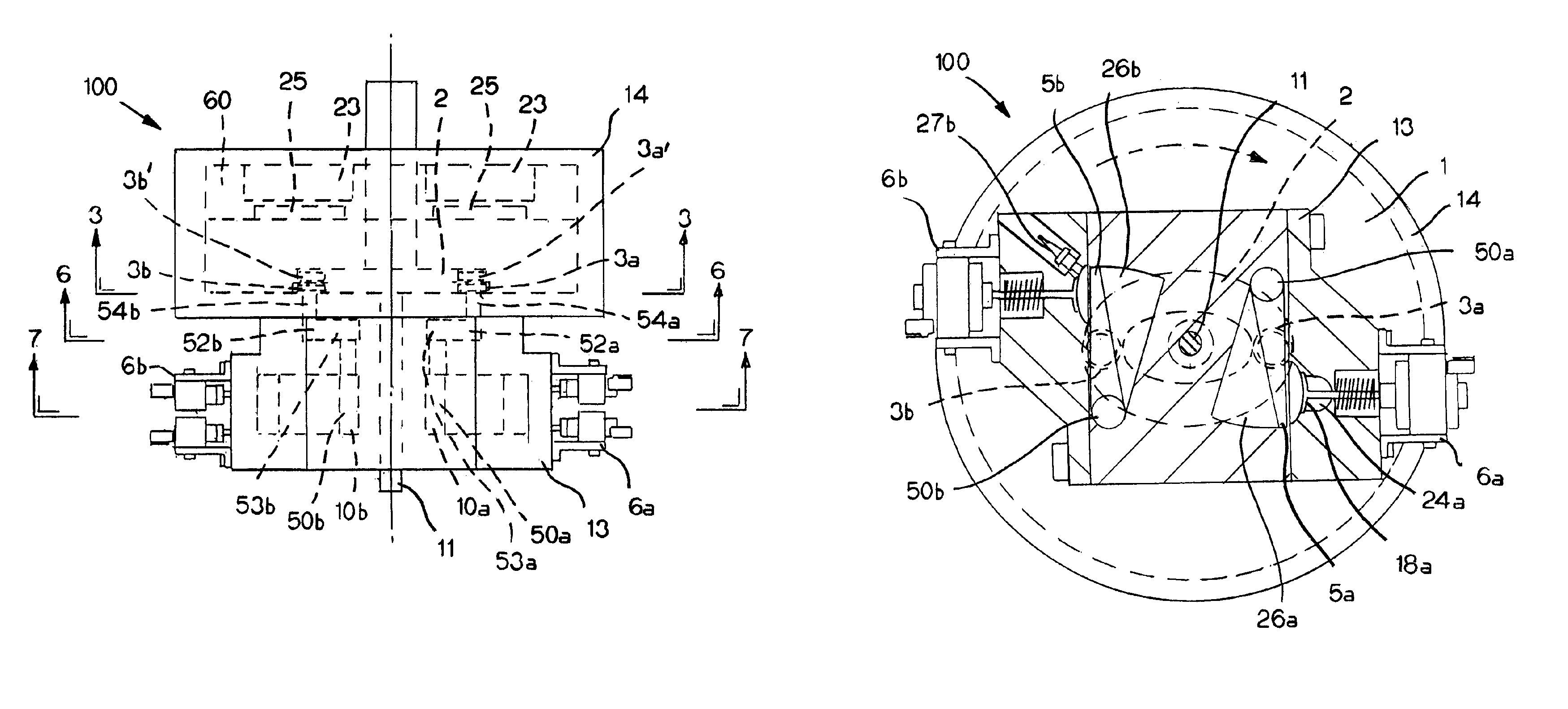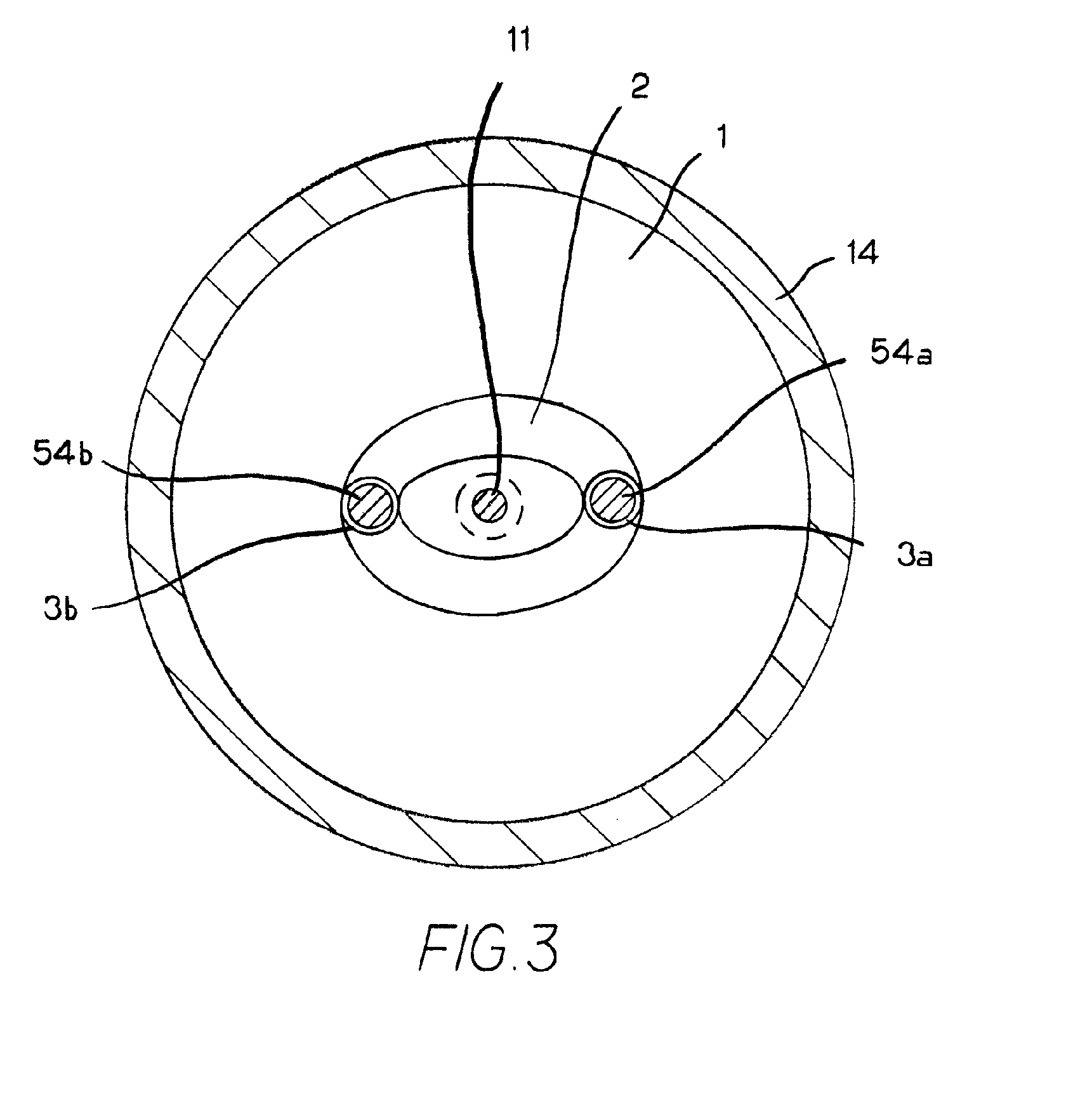Internal combustion engine
a combustion engine and internal combustion technology, applied in combustion engines, engines with oscillating pistons, positive displacement engines, etc., can solve the problems of significant mass, limited crank shaft maximum rotational speed, and two-cycle engines are must less efficient than four-cycle engines, so as to achieve constant rotational speed, high power output to weight ratio, and the effect of rotating faster
- Summary
- Abstract
- Description
- Claims
- Application Information
AI Technical Summary
Benefits of technology
Problems solved by technology
Method used
Image
Examples
Embodiment Construction
[0034]Referring first to FIGS. 1, 2, and 7, an exemplary internal combustion engine 100 made in accordance with the present invention includes a front housing (or engine block) 13 that defines two generally wedge-shaped combustion chambers 26a, 26b, although there could be fewer or more chambers without departing from the spirit and scope of the present invention. The exemplary internal combustion engine 100 further includes a second, rear housing 14 that defines an internal cavity 60 in which a wheel 1 is mounted for rotation. This wheel 1 is mounted on a crankshaft 11 that extends through both the front and rear housings 13, 14 of the engine 100 and is supported by a series of bearings (not shown).
[0035]Returning to the front housing 13, arranged inside each combustion chamber 26a, 26b is a gate 5a, 5b. As illustrated in FIG. 7, these gates 5a, 5b are also generally wedge-shaped, but become narrower as the respective combustion chamber 26a, 26b widens. In other words, the widest p...
PUM
 Login to View More
Login to View More Abstract
Description
Claims
Application Information
 Login to View More
Login to View More - R&D
- Intellectual Property
- Life Sciences
- Materials
- Tech Scout
- Unparalleled Data Quality
- Higher Quality Content
- 60% Fewer Hallucinations
Browse by: Latest US Patents, China's latest patents, Technical Efficacy Thesaurus, Application Domain, Technology Topic, Popular Technical Reports.
© 2025 PatSnap. All rights reserved.Legal|Privacy policy|Modern Slavery Act Transparency Statement|Sitemap|About US| Contact US: help@patsnap.com



